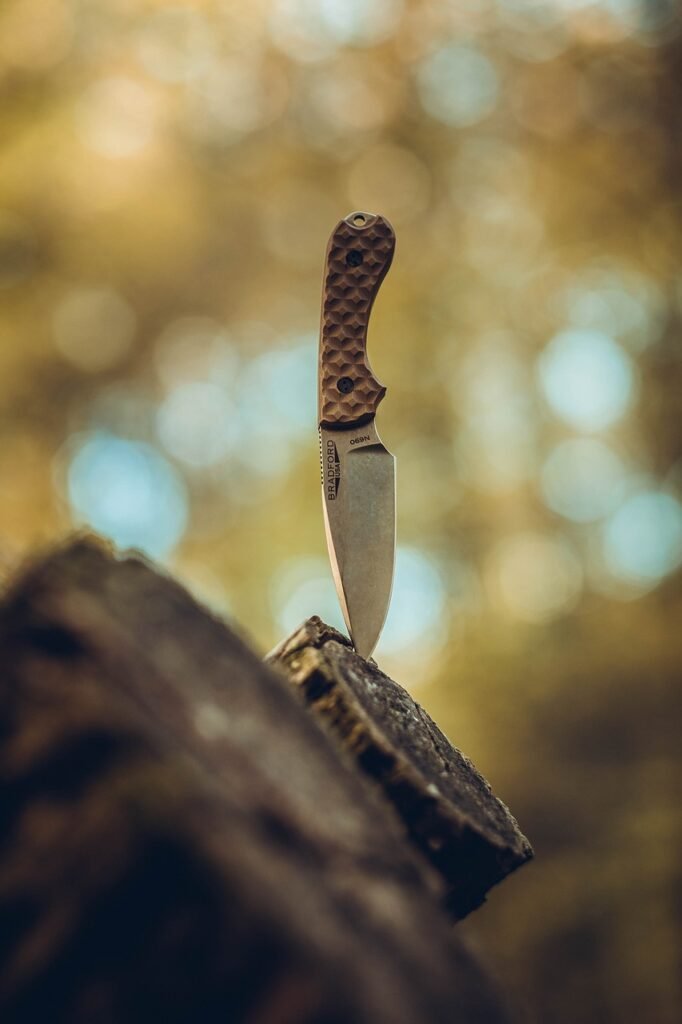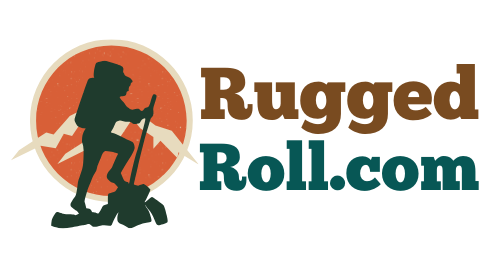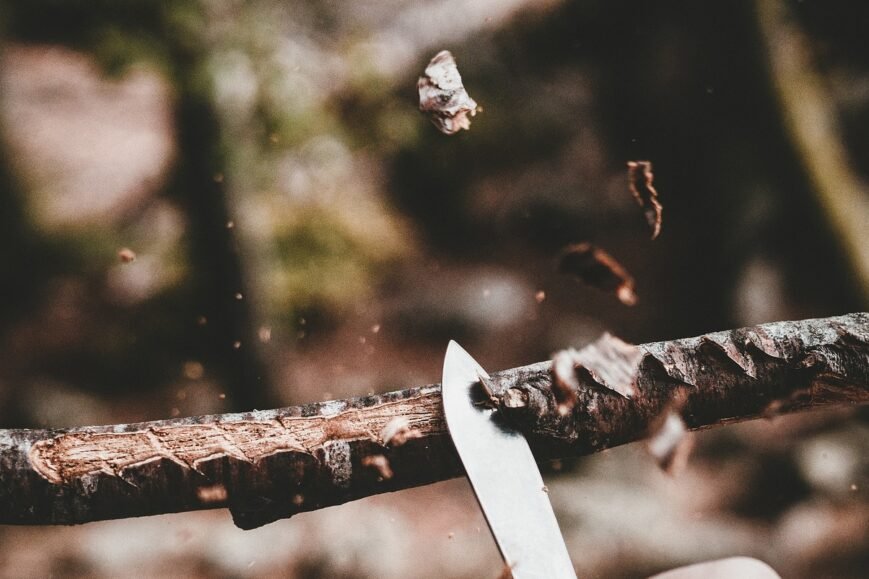When preparing for a hike, one of the questions that often comes up is whether to pack a knife. For those new to hiking, the idea of carrying a knife may seem unnecessary or even intimidating. However, a knife is one of the most useful tools you can have with you on the trail.
In this comprehensive guide, we’ll explore the various scenarios in which a knife could be invaluable during a hike, and we’ll provide detailed advice on how to choose the right knife for your adventures.
TL;DR
- A hiking knife is a versatile tool that can be invaluable during a hike.
- It serves multiple purposes, including trail maintenance, food preparation, first aid, fire starting, gear repair, emergency shelter, and self-defense.
- When choosing a hiking knife, consider factors such as the type of knife (fixed blade vs. folding knife), blade material (stainless steel, carbon steel, or high-carbon stainless steel), blade length, handle material, and additional features like locking mechanism, one-handed opening, pocket clip, and lanyard hole.
- Invest in a quality knife with a warranty and prioritize safety by handling the knife with care, keeping the blade folded or sheathed when not in use, maintaining a stable grip, using a cutting board or stable surface, keeping the knife clean and dry, and regularly sharpening it.
- Familiarize yourself with the knife carry laws in the area where you’ll be hiking, and remember that a hiking knife cannot be carried in carry-on luggage when flying.
- Proper care and maintenance of your hiking knife will ensure its longevity and effectiveness.
- Always prioritize safety, respect, and awareness when handling and using a knife during your hiking adventures.
Understanding the Utility of a Hiking Knife
A hiking knife is not just for wilderness survival scenarios or for the Bear Grylls among us. It is a multi-purpose tool that serves many practical purposes. Here are some of the scenarios where a knife can come in handy:
Trail Maintenance and Navigation
While on the trail, you may encounter overgrown vegetation that blocks your path or thorny bushes that can scratch and tear your clothes and skin. A knife allows you to trim back these obstacles and clear your way. Additionally, in an emergency situation, you can use a knife to mark trees or carve arrows to indicate your direction of travel for rescuers.
Food Preparation
Whether you’re slicing through a piece of fruit, cutting cheese or summer sausage for a trail snack, or prepping vegetables for a campfire meal, a good knife makes food preparation much easier. It’s also essential for opening food packaging that can be tough to tear by hand.
First Aid
In a medical emergency, a knife can be a lifesaver. It can be used to cut bandages, tape, or clothing to treat wounds. While we hope it’s never necessary, having a knife can make a significant difference in a first-aid situation.
Fire Starting
If you need to start a fire, a knife can be used to shave small pieces of wood to create tinder, or to strike a ferro rod if your knife has a sharp spine. This can be crucial for warmth and cooking if you end up spending an unplanned night in the wilderness.
Gear Repair
On the trail, gear can break. A knife can help in repairing equipment, from cutting repair tape or patches to fit, slicing rope, or even whittling a piece of wood to replace a broken tent peg.
Emergency Shelter
In the unfortunate event, that you have to stay out overnight unexpectedly, a knife can help you gather and cut materials for an emergency shelter, such as branches for a lean-to or insulation.
Self-Defense
While attacks from wildlife or other threats are extremely rare, a knife can provide a sense of security. It should be noted that the best defense is always to be aware of your surroundings and take preventative measures such as making noise to avoid startling wildlife.

Choosing the Right Hiking Knife
Now that we understand the uses of a hiking knife, let’s delve into how to choose the right one. There are several factors to consider:
Type of Knife
- Fixed Blade vs. Folding Knife: Fixed blades are generally more robust and reliable, whereas folding knives are compact and easy to carry. For most hikers, a folding knife will be sufficient and more convenient.
- Multi-tool vs. Single Blade: Multi-tools come with additional features like scissors, screwdrivers, and even tweezers, which can be useful for gear repair and other tasks. A single blade is typically stronger and lighter.
Blade Material
- Stainless Steel: Resistant to rust and easy to maintain, ideal for wet environments.
- Carbon Steel: Holds an edge longer but is prone to rust, so it requires more care.
- High-Carbon Stainless Steel: Combines the best of both worlds with easier maintenance and good edge retention.
Blade Length
- Under 3 Inches: Ideal for most hiking tasks and legal in more places.
- Over 3 Inches: This may be necessary for larger tasks but can be illegal in some areas and heavier to carry.
Handle Material
The grip is important for safety and ease of use. Look for materials like rubber for good grip, even in wet conditions, or hard-use materials like G-10 if durability is a priority.
Additional Features
- Locking Mechanism: Essential for folding knives to prevent accidental closure.
- One-Handed Opening: Useful if you need to use the knife while holding something with your other hand.
- Pocket Clip: Convenient for keeping your knife accessible.
- Lanyard Hole: This allows you to attach the knife to your pack or wear it around your neck.
Price and Warranty
Invest in a quality knife that will last and look for brands that offer a warranty. While you don’t need to spend a fortune, the cheapest options may not provide the reliability you need.

Knife Safety and Care
Carrying a knife safely is just as important as choosing the right one. Here are some safety tips to keep in mind:
- Always handle your knife with care and respect. Treat it as a tool, not a toy.
- Keep the blade folded or sheathed when not in use to prevent accidental cuts.
- When using the knife, make sure you have a stable grip and keep your fingers away from the blade.
- Use a cutting board or stable surface when cutting food or other materials.
- Keep your knife clean and dry to prevent rust and maintain its performance.
- Sharpen your knife regularly to ensure it remains effective and safe to use.
Frequently Asked Questions
1. Is it legal to carry a hiking knife?
Laws regarding knife carry vary from country to country and even within different states or regions. It’s essential to familiarize yourself with the specific regulations in the area where you’ll be hiking. In general, folding knives with blade lengths under a certain limit (usually 3 inches) are legal in most places. However, it’s always best to check local laws to avoid any legal issues.
Here’s a great resource if you’re trying to figure out the legality of carrying a knife where you’re heading:
2. Can I take a hiking knife on an airplane?
No, you cannot carry a hiking knife in your carry-on luggage when flying. Knives, including hiking knives, must be packed in checked luggage. However, it’s important to note that rules and regulations regarding knives on airplanes can vary, so it’s best to check with the airline and relevant authorities before traveling.
3. How do I sharpen a hiking knife?
Sharpening a knife is a skill that takes practice, but it’s essential for maintaining its performance. There are various methods for sharpening a knife, including using a sharpening stone, a honing rod, or a knife sharpener. It’s recommended to follow specific instructions for the type of sharpener you’re using or seek guidance from a professional knife sharpener.
4. Can I use a hiking knife for self-defense?
While a hiking knife can provide a sense of security, it’s important to remember that it should be used primarily as a tool and not as a weapon. Self-defense situations are rare on the trail, and it’s always best to focus on prevention and awareness. Making noise, traveling in groups, and carrying bear spray are more effective measures for staying safe in the wilderness.
5. How do I care for my hiking knife?
Proper care and maintenance will ensure that your hiking knife lasts for years to come. After each use, clean the blade with mild soap and water, then dry it thoroughly. Apply a thin layer of oil to prevent rust. Store your knife in a dry place, preferably in a sheath or protective case. Regularly inspect the knife for any signs of damage or wear and address any issues promptly.

Conclusion
A hiking knife is a versatile and valuable tool to have on your outdoor adventures. From trail maintenance to food preparation and first aid to emergency situations, a knife can make a significant difference in your hiking experience.
By choosing the right knife for your needs and taking proper care of it, you’ll have a reliable companion that can assist you in various situations. Remember to always prioritize safety and respect when handling and using a knife, and be aware of the laws and regulations regarding knife carry in the areas you’ll be hiking. Happy trails!
![]()

